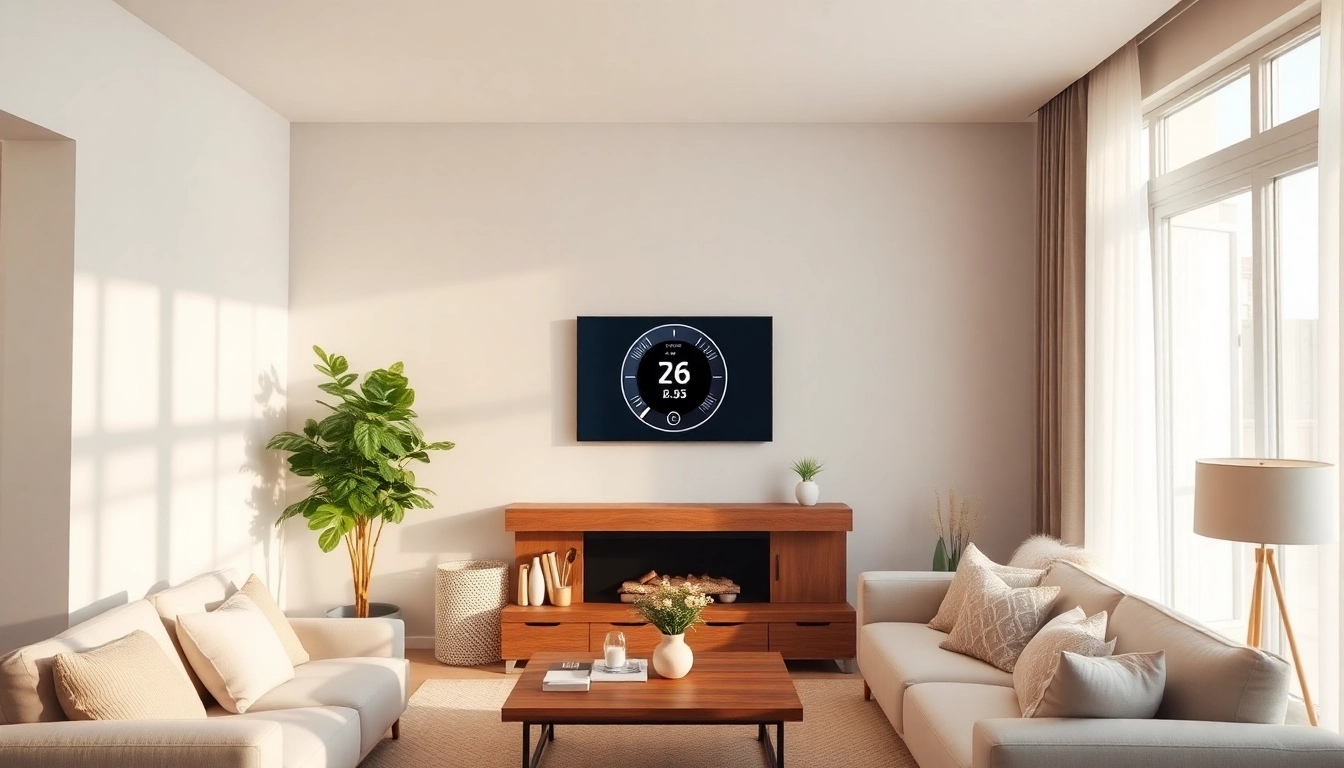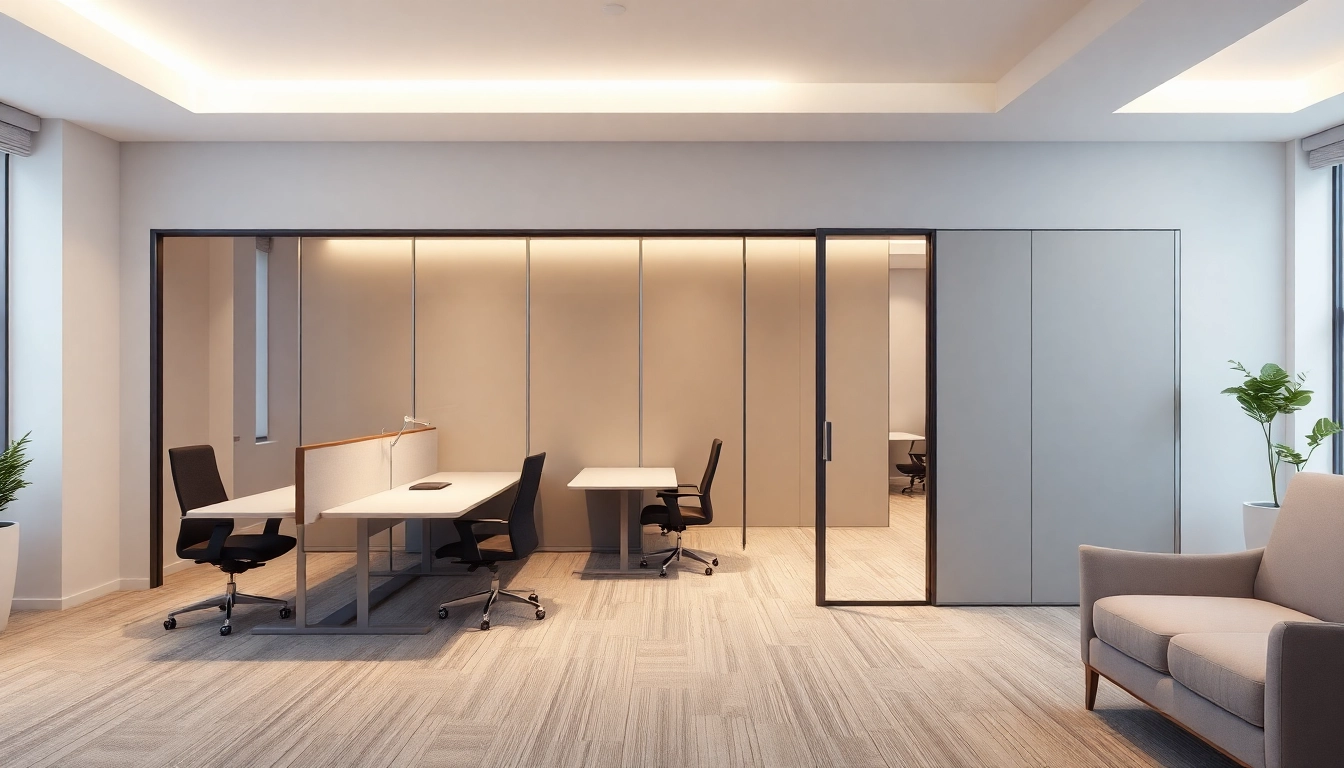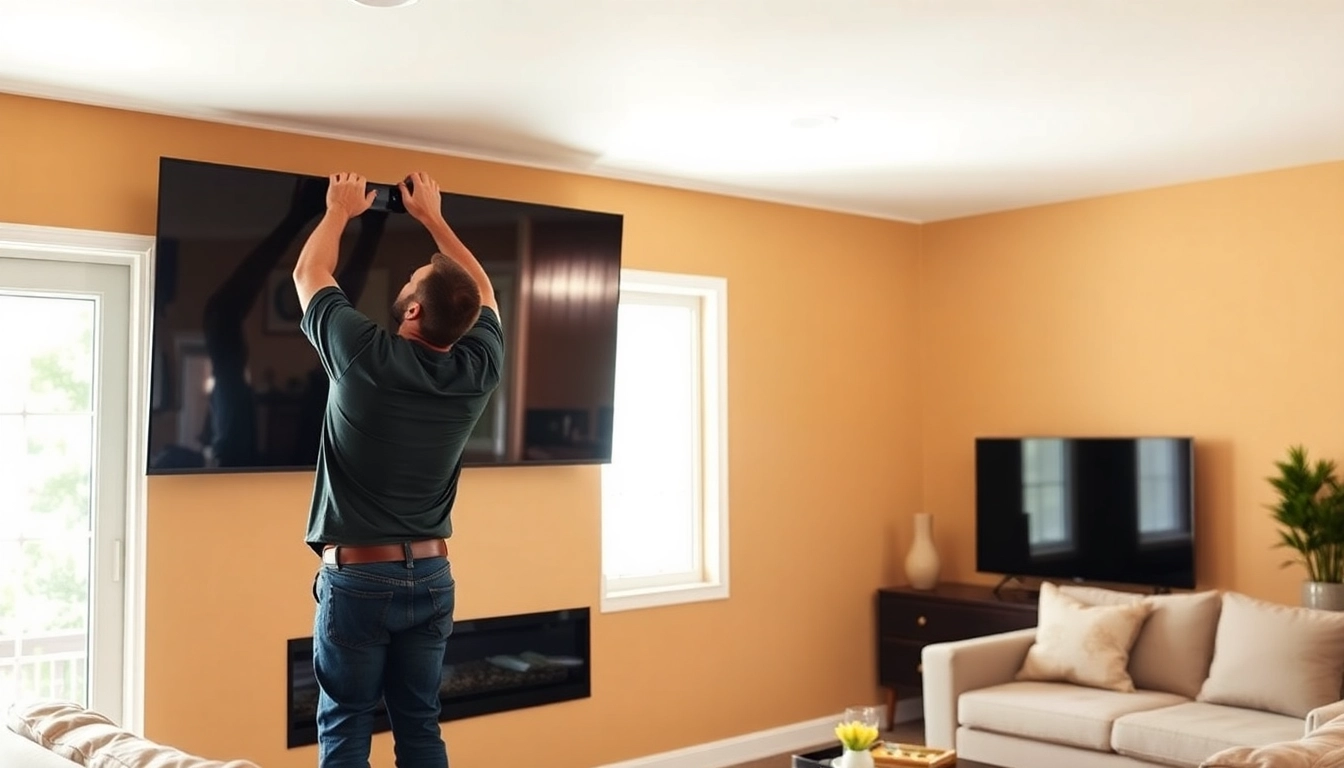Introduction to Folding Partition Walls
In an era where flexibility and efficiency in space usage are becoming paramount, the Folding Partition Wall offers a myriad of benefits for both residential and commercial interiors. This versatile solution combines functionality with aesthetic appeal, allowing for seamless transformations of large spaces into more intimate areas as needed. Whether you are reconfiguring an office, creating separate zones in a home, or adapting conference room settings, folding partition walls provide an ideal solution to meet the dynamic needs of today’s environments.
What is a Folding Partition Wall?
A folding partition wall is a movable wall system designed to divide a space into multiple areas without the need for permanent structural changes. These partitions can be made from various materials such as fabric, glass, or wood and can collapse or slide to create open areas or close off sections as required. Their design typically allows for high sound absorption, providing privacy and reducing noise levels between spaces.
Benefits of Using Folding Partition Walls
The advantages of implementing folding partition walls are numerous:
- Space Optimization: They help maximize the utility of a given area by allowing users to adjust the layout according to current needs.
- Cost-Effective: Compared to traditional construction methods, folding partitions are less expensive to install and maintain, requiring no extensive renovations.
- Enhanced Flexibility: These walls can be configured differently for various purposes, whether for meetings, events, or recreation.
- Improved Acoustics: Many folding partitions are designed to provide acoustic separation, ensuring quieter, more private spaces.
- Stylish Options: With a wide array of designs and materials, they can enhance the aesthetic appeal of a space while serving functional needs.
Common Applications in Residential and Commercial Spaces
Folding partition walls are used across diverse environments:
- Offices: In corporate settings, adjustable partitions help create meeting rooms, collaborative spaces, or private offices.
- Homes: Homeowners employ folding partitions to create multipurpose rooms, enabling spaces that are ideal for work, relaxation, or social engagement.
- Educational Facilities: Schools utilize these partitions to easily configure classrooms for varied activities or events.
- Exhibition Halls: During trade shows or fairs, folding partitions are used to effectively organize vendor displays.
Types of Folding Partition Walls
Accordion vs. Sliding Partition Walls
Two popular styles of folding partition walls are accordion and sliding types:
- Accordion Walls: These partitions merely fold back on themselves, allowing for quick assembly and disassembly. They are typically lightweight and can be used in various applications where flexibility is highly sought after.
- Sliding Walls: These partitions slide along tracks and may be designed for heavier duty applications, often providing better acoustic performance due to their solid arrangement and material density.
Material Options: Wood, Fabric, and Glass
The choice of material for folding partition walls significantly impacts their performance and aesthetics:
- Wood: Offers a traditional look, often used in settings that require warmth and classic design, while also providing good acoustic properties.
- Fabric: This option is versatile and can easily incorporate patterns and colors, typically used in more informal or relaxed settings.
- Glass: Enhances natural light and visual connectivity between spaces while maintaining a sense of separation; it’s ideal for modern design and office environments that require both function and style.
Choosing the Right Design for Your Needs
When selecting a folding partition wall, consider the following factors:
- Purpose: What will be the primary use of the partitioned space? Office functions may require different features compared to home applications.
- Space Constraints: Ensure that your chosen partition fits well within your existing space without obstructing movement.
- Design Consistency: The design should align with the overall aesthetic of your environment.
- Durability and Maintenance: High-traffic areas necessitate more durable materials and finishes, requiring less frequent maintenance.
Installation and Maintenance of Folding Partition Walls
Step-by-Step Installation Guide
The installation of folding partition walls can vary based on the type selected, but generally follows these steps:
- Preparation: Measure the area for the partition and prepare the site, including cleaning and making any necessary adjustments to existing fixtures.
- Install Tracks or Hangers: Depending on whether it is an accordion or a sliding wall, you’ll need to install track systems or wall mounts at the appropriate heights.
- Mount the Panels: Carefully fit the panels onto the guides and make necessary adjustments to ensure smooth operation.
- Finishing Touches: Seal any gaps if needed and ensure that all components are securely fastened.
Regular Maintenance Tips for Longevity
To ensure the longevity of your folding partition walls, routine maintenance should include:
- Regular Cleaning: Use appropriate cleaning agents based on material (wood, fabric, or glass) to keep the walls looking their best.
- Check Hardware: Regularly inspect and tighten any screws, brackets, or tracks to prevent malfunction.
- Monitor for Damage: Be on the lookout for dents, scratches, or other damages, and address them promptly to maintain aesthetics and functionality.
Professional vs. DIY Installation: Pros and Cons
When it comes to installation, you may choose between hiring professionals or attempting a DIY approach:
- Professional Installation:
- Pros: Expert knowledge, less risk of errors, and likely a warranty or guarantee on work.
- Cons: Higher costs and less control over the installation timeline.
- DIY Installation:
- Pros: Saves labor costs, offers a personal touch, and can often be a less expensive option.
- Cons: Risk of mistakes, potential safety hazards, longer installation time, and lack of professional finishing.
Design Trends with Folding Partition Walls
Modern Aesthetics: Blending Functionality with Style
Contemporary designs increasingly lean toward minimalism, and folding partition walls are no exception. Key trends include:
- Eco-Friendliness: Many manufacturers now offer sustainable materials that appeal to environmentally conscious consumers.
- Smart Technology: Integration of automated systems that can be controlled via smartphones or existing smart home networks is becoming more popular.
- Textured Surfaces: Textures in walls, such as wood grains or fabric patterns, enhance design without sacrificing function.
Customizing Your Folding Partition Wall
The ability to customize folding partition walls opens up a world of creative possibilities:
- Color and Patterns: Collaborating with designers can result in bespoke partitions that offer unique flair.
- Integrated Features: Consider installing shelving, whiteboards, or projection screens directly onto partition panels for added functionality.
- Lighting Options: Some systems allow for integrated lighting which can enhance mood and adaptability.
Case Studies: Inspiring Examples of Effective Use
Numerous organizations and residences have benefited from the strategic use of folding partition walls:
- Corporate Office: A leading tech firm integrated glass folding partition walls to create flexible workspaces that adapt throughout the day, promoting collaboration while maintaining privacy for focused work.
- Restaurant: A trendy eatery utilized fabric partitions to create intimate dining experiences and maintain an open environment during events, enhancing flow and functionality.
- Educational Institutions: A university used accordion-style partitions in lecture halls, allowing room configurations for various group sizes, from small breakout sessions to large lectures.
Conclusion and Future of Folding Partition Walls
Innovative Technologies in Partitioning Solutions
The future of folding partition walls appears bright, fueled by continual technological advances. Observed trends include:
- Smart Partitions: As technology evolves, the merging of partition systems with adaptable tech contrives to produce smarter, more efficient interiors.
- Enhanced Materials: Innovations in soundproofing and thermal insulation are enhancing the functional performance of partition walls.
- AR & VR Integration: Virtual Reality and Augmented Reality technologies are being explored for planning and visualization before physical construction begins.
Environmental Considerations in Design
As sustainability becomes imperative, the design of folding partition walls is also incorporating eco-friendly practices. Recyclable materials, low-VOC finishes, and energy-efficient manufacturing methods are becoming industry standards.
Final Thoughts: Enhancing Space Efficiency
The implementation of folding partition walls presents an exceptional solution for maximizing space efficiency in any setting. With the right selection and design, they not only enhance functional areas but also contribute positively to the atmosphere and usability of spaces, making them valuable assets in modern architectural design.



